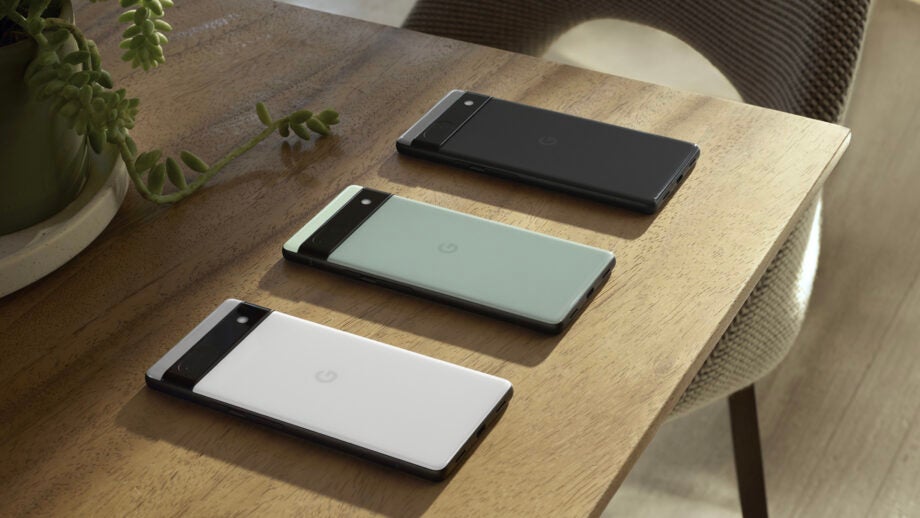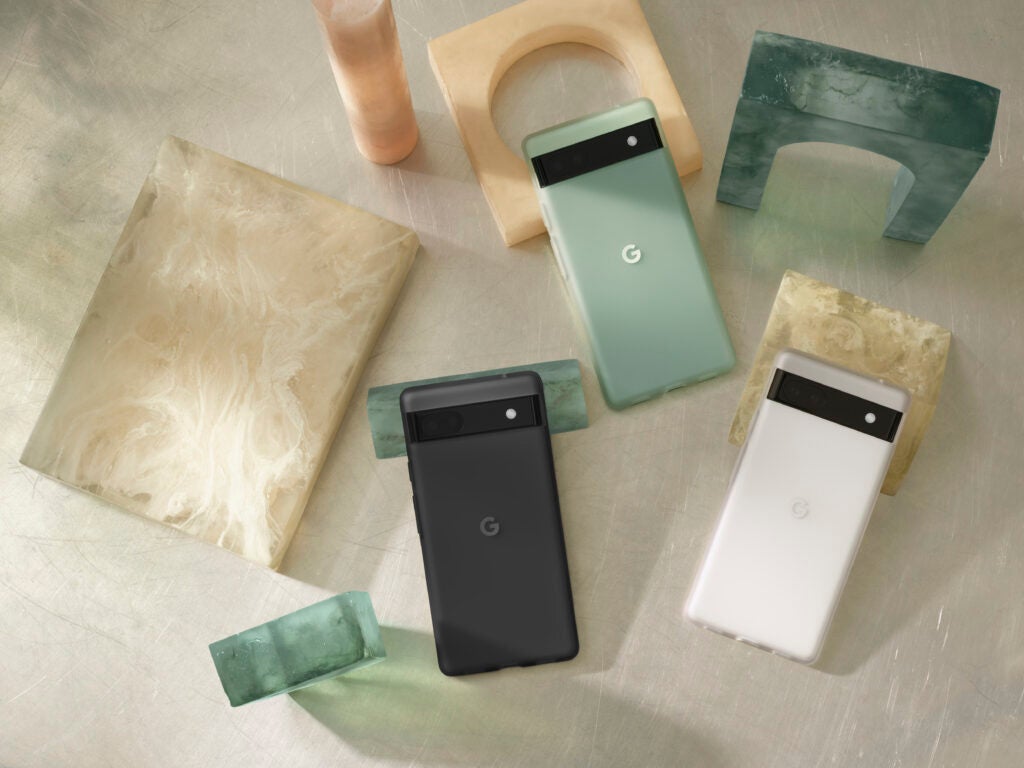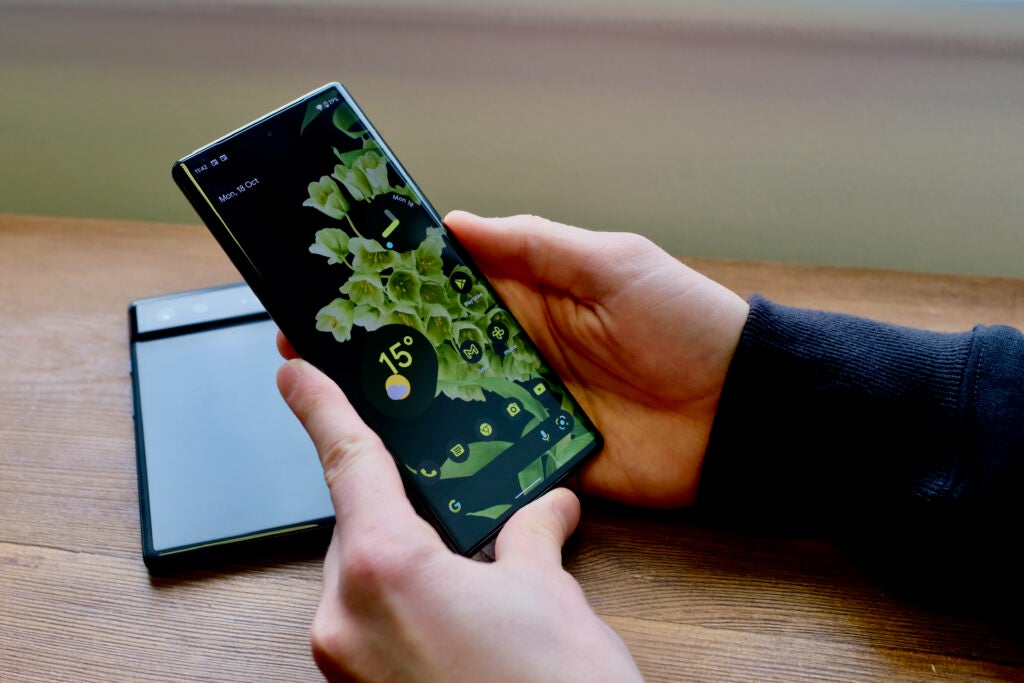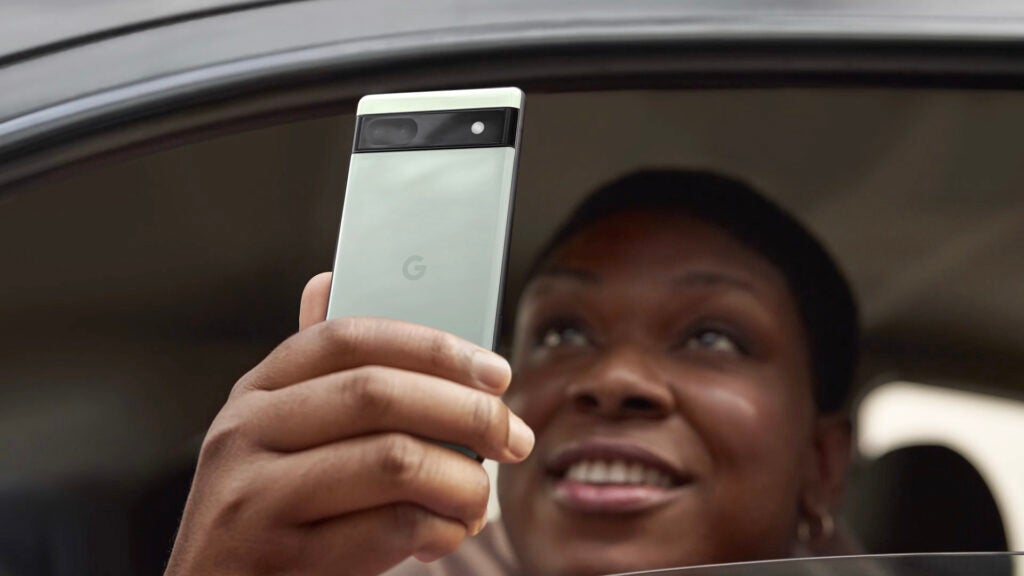Pixel 6a vs Pixel 6: Should you spend big, or go budget?

Google just unveiled its latest affordable smartphone, the Pixel 6a alongside the Pixel Watch, Pixel Tablet and Pixel Buds Pro at it’s I/O conference. But does it trump its more premium Pixel 6 sibling when it comes to value for money?
Google I/O 2022 has seen the release of the Pixel 6a mid-range handset, but how do the compromises compare to the specs of the mainline Pixel 6? Read on for our full detailed breakdown based on the two device’s technical specs and our experience reviewing and using the Pixel 6. We’ll update this page with our final verdict on how the two compare when we’ve got the Pixel 6a in for review and have had a chance to properly put it through its paces.
Design
As far as looks are concerned, the two handsets resemble each other quite closely. Both have a large camera bar stretched across the rear panel, while there’s a small notch for a selfie camera in the front of the screen.
The Pixel 6a comes in three colours: Charcoal, Chalk and Sage, while the Pixel 6 comes in Sorta Seafoam, Kinda Coral and Stormy Black. Google has also developed colour matching cases for the 6a lineup, meaning that you will still be able to show off your colour choice without the risk of scratching up the back panel.

The Pixel 6 has an IP68 rating, so it is certified to be highly resistant to water or dust ingress. The Pixel 6a, meanwhile, had an IP67 protection rating, meaning that it is protected against water and dust, though it won’t be as protected as the Pixel 6. Based on our experience with the Pixel 6, which is well made, but fairly slippy to hold when damp we’d recommend any buyer invest in a case regardless of which phone they pick.
Screen
The Pixel 6’s OLED screen measures 6.4 inches and has a 1080p resolution. The refresh rate can switch between 60Hz and 90Hz so that it can be a tad smoother for more screen-intensive tasks although we didn’t find it to be all that responsive when we reviewed it. Generally speaking, the screen is par for the course, without excelling compared to its peers.

The Pixel 6a’s display is slightly smaller, at 6.1-inches, and it just has a standard 60Hz refresh rate though the resolution is the same, at 1080p. So based on these specs, we’d expect the Pixel 6 to have a slightly smoother display, but the difference may not be incredibly pronounced.
Camera
There are two main cameras on the rear of the Pixel 6, including one new 50-megapixel main sensor which is accompanied by a 12-megapixel ultrawide lens. Notably, there’s no telephoto sensor for an optical zoom facility, but aside from that, the camera system is truly excellent, offering pictures that are packed full of detail whether taken in daylight or lowlight settings.

The Pixel 6a also packs an iconic camera bar that features two rear cameras; a main lens and an ultrawide lens. The selfie camera is the same as the Pixel 6. The device also hosts some of the same photography software features, including Real Tone, which better represents people’s skin tones in pictures, as well as Night Sight and Magic Eraser, which is ideal for removing photobombers from your snaps based on our experience using it on the Pixel 6 and Pixel 6 Pro.
Performance
The Pixel 6 runs on Google’s own brand Tensor chipset, the first time we’d seen such a processor in action. There were some janky moments with the software, but overall we found that apps ran well on this silicon, and the AI features are a massive positive.
Since we haven’t tested out the Pixel 6a, we can’t make any definitive comments on its performance. However, we do know that it comes with the same Google Tensor chip that’s in both the Pixel 6 and Pixel 6 Pro. Seeing it uses the same chipset, we would expect it to run as smoothly as the other phones, with Google claiming that it can power advanced features like Live Translate. This is one of our favourite features, which lets the phones real-time translate what someone is saying to you in a foreign language.
Battery
The onboard battery has a capacity of 4600mAh, and typically we found that we’d get through a day with just 5-10% left on the clock. If you run intensive programs or games then you might find that it runs down even more quickly. Once drained, you can use 30W charging to top it up again, and we found that a full charge takes 115 minutes.
The Pixel 6a’s battery is a tad smaller, at 4410mAh, but since we’ve not yet tested it we don’t know how the battery will fare during day-to-day use. Google claims that the battery can last over 24 hours, which we will definitely investigate once we get a unit in for testing. Google also mentioned that the phone will be able to last over 72 hours when in Extreme Battery Saver mode.
Price and availability
The Pixel 6 launched at $599 (£599), which put it on the lower in terms of price for a high-end phone. The Pixel 6a has a starting price of $449 (£399), which is a considerable price drop when compared to its older brother, especially considering that it packs the same premium chipset and camera features. The Pixel 6a will be available to pre-order on July 21 and will hit shelves on July 28, while the Pixel 6 is already in stock and available to buy since it launched last year.
Early Verdict
While it’s too early to say anything concrete, it looks like the Pixel 6a is a great alternative for anyone who wants to save a little money while still experiencing all the benefits of the Google Tensor chipset. Thanks to this silicon, it will still boast impressive camera features like Magic Eraser and Real Tone, which were introduced with the Pixel 6, while the battery and screen specs seem to be minor discrepancies rather than dealbreakers. That said, we’ll need hands-on time with the Pixel 6a before we can deliver a definitive verdict.





